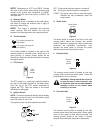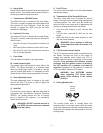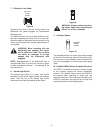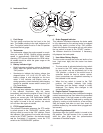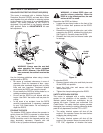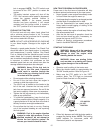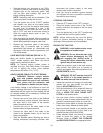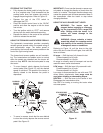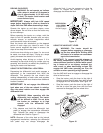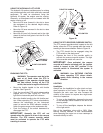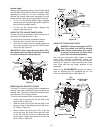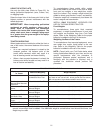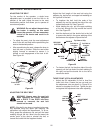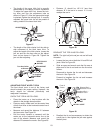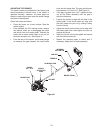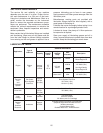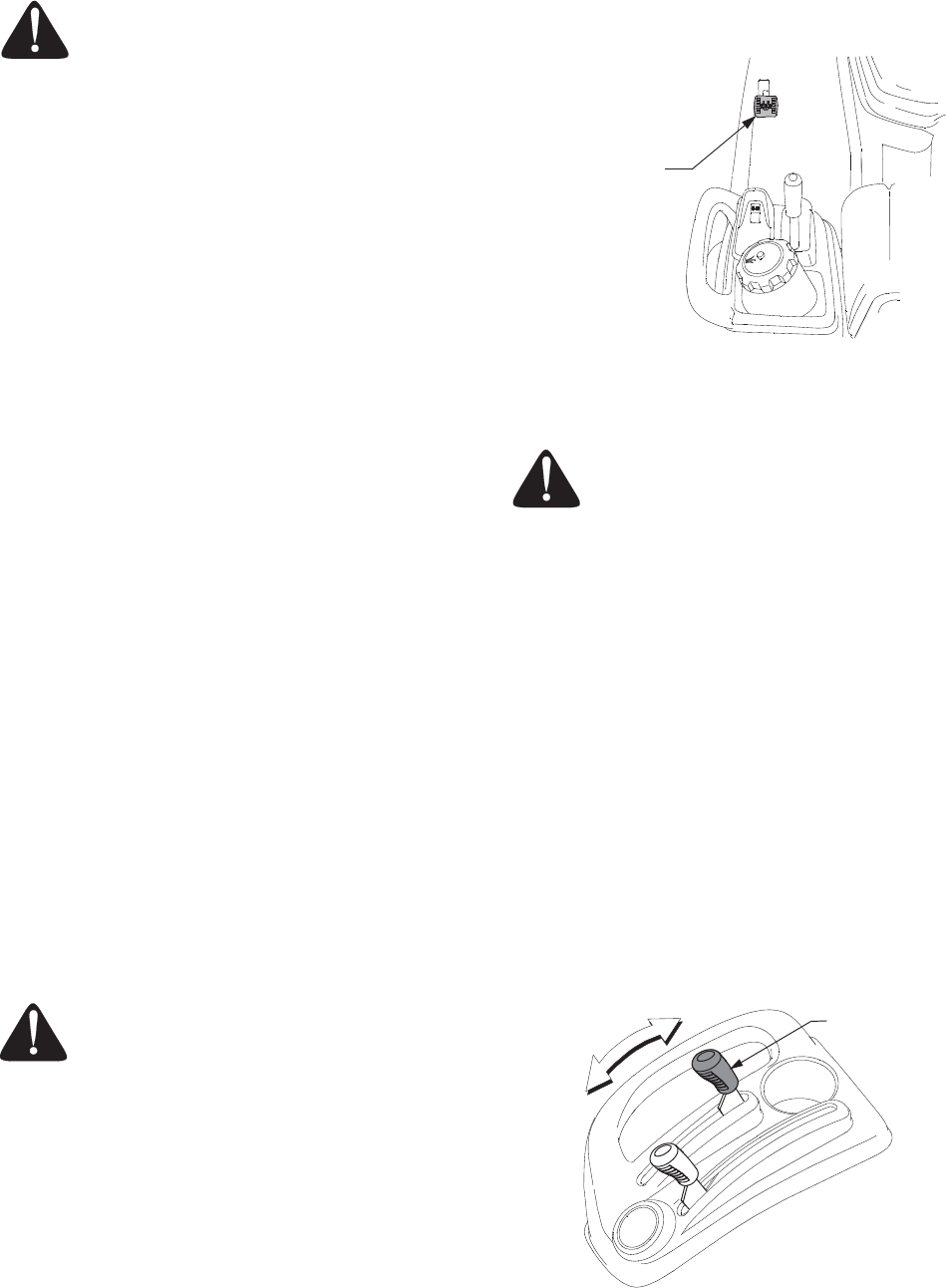
18
DRIVING ON SLOPES
WARNING: Do not operate on inclines
with a slope in excess of 15 degrees (a
rise of approximately 2-1/2 feet every
10 feet). The tractor could overturn and
cause serious injury.
IMPORTANT: Always shift into LOW speed
range before beginning to climb or descend a
slope. Shift into 4WD when descending a slope.
Operate the tractor up and down slopes, never
across slopes. Do not drive so that the tractor may
tip over sideways
Before operating the tractor on a slope, walk the
slope to look for possible hazards such as rocks,
mounds, stumps, or surface irregularities which
could cause the tractor to be upset.
Back the tractor with attachment up the steepest
portion of each slope you intend to work. If the
tractor cannot negotiate the slope in reverse, the
slope is too steep to be worked.
Avoid turns when driving on a slope. If a turn must
be made, turn down the slope. Turning up a slope
greatly increases the chance of a roll over.
Avoid stopping when driving up a slope. If it is
necessary to stop while driving up a slope, start up
smoothly and carefully to reduce the possibility of
flipping the tractor over backward.
USING THE DIFFERENTIAL LOCK PEDAL
Depressing the differential lock pedal engages a
mechanism in the transmission that locks the
differential. This prevents the rear wheels from
rotating independently of each other and provides
constant power to both rear wheels when additional
traction is needed.
IMPORTANT: Do not engage the differential
lock when one of the rear wheels is rotating.
Stop the wheel rotation and then engage the
differential lock.
WARNING: When operating with the
differential lock engaged, the tractor
will be difficult to steer. Do not drive
the tractor on roadways or at high
speeds with the differential lock
engaged.
• Fully depress and hold the differential lock
pedal to engage the transmission differential
lock. Release the pedal to disengage the
differential lock. Refer to Figure 17.
NOTE: Because of the drive load on the internal
engagement mechanism, releasing the differential
lock pedal may not always disengage the
differential lock. It may be necessary to slow the
tractor, or reverse the direction of travel, to
disengage the differential lock.
Figure 17
USING THE 4WD SHIFT LEVER
WARNING: The tractor should be
stopped before engaging or disengag-
ing the four wheel drive. Shifting while
the tractor is in motion can cause dam-
age to the transmission.
IMPORTANT: To prevent possible damage to
the tractor transmission, engage the 4WD only
when additional traction is needed while operat-
ing in loose soil or on slippery surfaces (e.g.
mud, snow), or when descending a slope. Dis-
engage the 4WD when operating on firm, flat
surfaces or when operating at high speeds.
Use the 4WD shift lever to engage or disengage the
drive to the front axle.
• Stop the tractor; push the lever to the right of
the slot to clear the shift gate; then shift forward
to engage the four wheel drive. See Figure 18.
• Stop the tractor; push the lever to the right of
the slot to clear the gate; then shift the lever
rearward to disengage the four wheel drive.
Figure 18
DIFFERENTIAL
LOCK PEDAL
(Depress and
Hold to Engage)
Disengage
4WD
Engage
4WD
4WD SHIFT
LEVER



